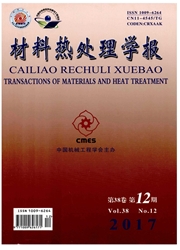

 中文摘要:
中文摘要:
运用裂纹柔度法检测了7075-T73、T7351、T7352铝合金板中的残余应力.试验发现:应变测量误差主要源自在试验后期试样重力的影响以局部温度变化的影响.在裂纹柔度法计算中引入权函数能有效的抑制测量误差,提高残余应力检测精度.用梁弯曲试验对裂纹柔度法试验结果作了验证,提出了权函数参数(t1,t2)的设置方法,试验结果与理论值取得良好一致.试验结果表明:铝合金板的预拉伸工艺可消除约90%的残余应力.压缩工艺可获得压缩的残余应力,对应力消除的效果最佳.
 英文摘要:
英文摘要:
The crack compliance method (CCM) was employed to measure the through-thickness residual stresses profiles in 7075-T73, T7351 and T7352 aluminum plates. It is concluded that the errors in CCM, especially in last period of measurement, are mainly ascribed to specimen gravity and local temperature variation. A weight function is introduced to reduce these influences. The bent beam, which had an accurately known residual stress distribution, was used to evaluate the application of CCM and the determination of the parameters (t1, t2) in weight function was proposed. The results from CCM are well consistent with that from FEM. It is indicated that the stretch can relieve approximately 90% residual stress produced during quenching and the compress processing forms compressive stress in the core of the plates.
 同期刊论文项目
同期刊论文项目
 同项目期刊论文
同项目期刊论文
 期刊信息
期刊信息
